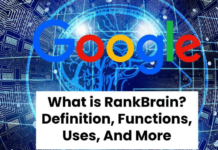Search engines and their algorithms have evolved greatly and continue to do so. There was a time when stuffing keywords in content and spamming strangers with emails got you decent rankings. Also, promoting your stuff on a single channel was considered more than enough to secure leads.
Fast-forward to today, it’s impossible to sail your business through the stiff competition through the methods mentioned in the above paragraph. You need a solid, integrated strategy to target the right audience at the right time and at the right budget. Ask any agency that offers digital marketing services in USA and its team to agree to this fact.
This is where the Converged Media Strategy comes into the picture. By definition, it is a marketing plan that encompasses owned, earned and paid media elements. Each channel has its own goals, tasks, and metrics that define it, but they must all work together to achieve your strategic business goals.
I will walk you through the concepts of paid, owned, and earned media so that you get a better idea of how to combine and use them for your business.
Paid Media
Paid media is a digital activity where you pay a fixed amount to place your ad on a website or social media platform, or for each click-through on a search engine. This includes search ads, display ads, and social media advertising methods.
Given below are some of the key paid media metrics along with their acronyms:
CPA (Cost per acquisition), CPC (Cost per click), ROAS (Return on ad spend), ROI (Return on investment), CTR (Click-through rate), CPM (Cost per thousand), and IS (Impression share).
Paid media is mostly used to drive more leads from a popular website or social media platform to your websites through advertising. Companies use their on-site content to convert potential visitors to their websites.
There are three types of ads that can be used to attract users on paid media:
- Search ads: These ads appear on Google after a search is completed. The ads are charged depending on where you want to place them. You should pursue and target the right keywords to display in search ads. Avoid targeting highly competitive keywords.
- Display ads: You will frequently see them as banner ads that get displayed around publishers’ content. Your website should be popular, respected and authoritative so as to get more value from the advertisements. Digital marketers can display ads in many ways. For example, they can place them on a competitor’s website, target popular industry-specific websites or approach other news sources.
You can also target users based on their interests and demographics. The technique of ‘targeting’ allows you to analyze the data collected over time and place ads more strategically.
- Social media ads: Such ads can be placed on both the designated spaces and users’ news feed a.k.a. Timeline. Placing them on the timeline lets the users consume the ads whilst they are scrolling through the content.
Owned Media
Owned media are the platforms, digital assets and online property that you currently have. One of the best examples is the content on your website. From a digital marketing perspective, you should focus on search engine optimization (SEO), organic social media and content marketing efforts.
- SEO: This process helps you to improve your owned media platforms so that search engines can trust your website as an authoritative domain on your chosen subject matter. You should always keep an eye on the latest developments in this field and incorporate them into your on-page and off-page strategy.
- Content: Your content should always be valuable to your audience. Period. Quality content will ultimately improve your credibility and trustworthiness and you will be noticed by the search engines easily. Thus, it will drive more traffic and you can cash in on this opportunity.
- Organic social media: This includes mostly the user-generated content (UGC). Businesses can post over social media using pages and business profiles. This aspect is linked to content. A company whose content keeps readers hooked on till the end will get more attention. You also need to maintain a balance between creativity and information when posting on social media.
The key owned media metrics are traffic, unique sessions, organic keyword rankings, visibility, goal conversions, bounce rate, subscribers, trust flow, citation flow and referring domains.
Earned Media
In earned media, you acquire free-of-charge publicity for your business.
Examples of earned media include press releases, positive reviews or backlinks to your content. You can get them by building relationships with key digital publications, journalists and influencers.
An earned media strategy consists of two types of PR: proactive and reactive PR. Proactive activities attract media attention, find opportunities for interviews with spokespeople, submit expert’s comments and also include writing contributing articles for leading industry websites. Reactive activities, on the other hand, focus on media monitoring for brand mentions or negative feedback about your company.
A Final Word
As a business, converged media strategy will help you accomplish three goals:
- Attract more leads to your website.
- Expand your audience.
- Establish and maintain a position of authority in your niche.
It’s essential that you integrate the three types of media to achieve these three goals and don’t use them individually. Else, you won’t get the desired outcome and end up in a tight spot later on. Good luck!
Author Bio
Bharat Patel, who heads the digital marketing team at Brainvire Infotech, is armed with over 12 years of experience in the fields of online marketing and project management. He is extremely proactive in implementing the latest technological innovations in his projects. Bharat’s core expertise lies in search engine optimization (SEO), social media marketing, and conversion rate optimization, among other things. His immense flare of writing encourages him to consistently pen down words revolving around current trends and innovations that relate to his fields of interest.








